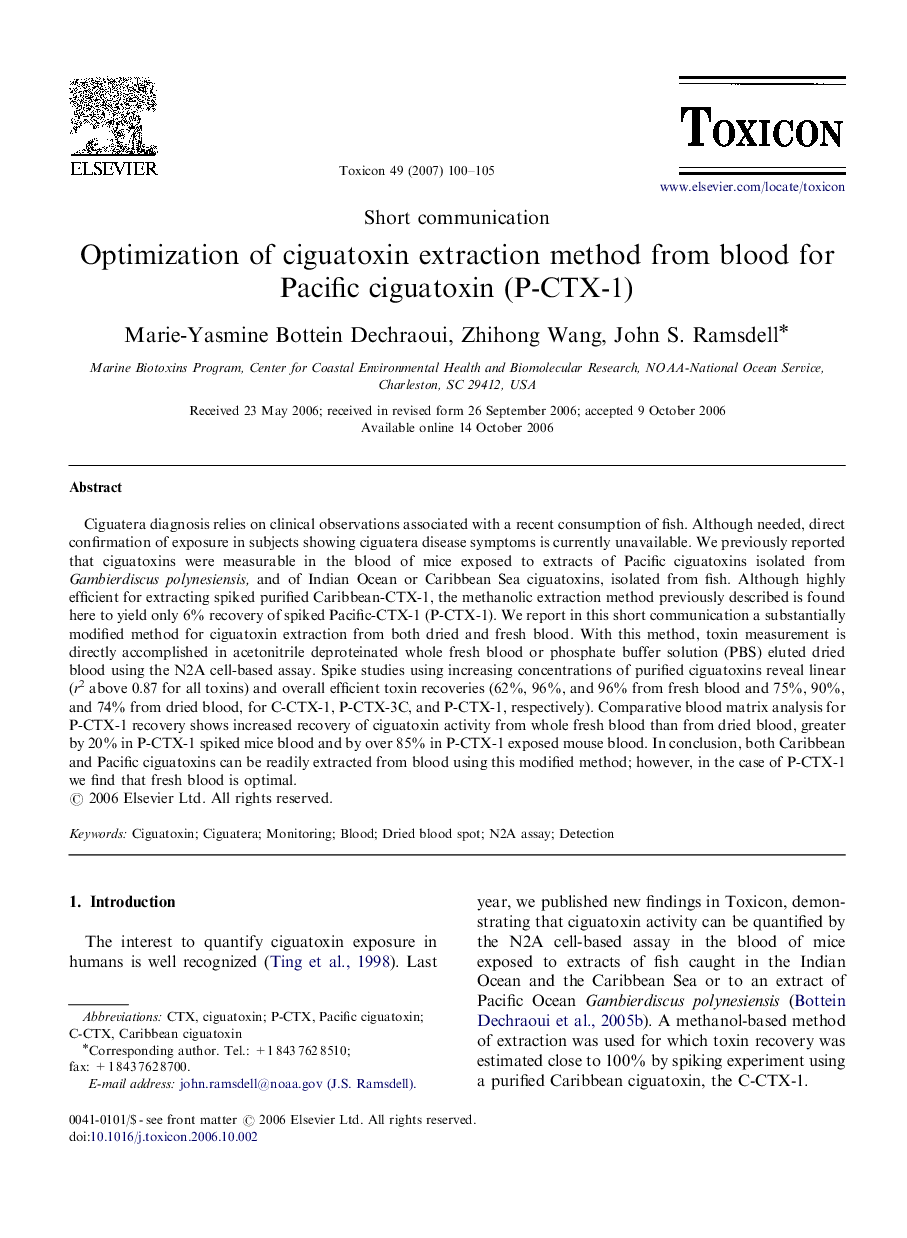| Article ID | Journal | Published Year | Pages | File Type |
|---|---|---|---|---|
| 2065490 | Toxicon | 2007 | 6 Pages |
Ciguatera diagnosis relies on clinical observations associated with a recent consumption of fish. Although needed, direct confirmation of exposure in subjects showing ciguatera disease symptoms is currently unavailable. We previously reported that ciguatoxins were measurable in the blood of mice exposed to extracts of Pacific ciguatoxins isolated from Gambierdiscus polynesiensis, and of Indian Ocean or Caribbean Sea ciguatoxins, isolated from fish. Although highly efficient for extracting spiked purified Caribbean-CTX-1, the methanolic extraction method previously described is found here to yield only 6% recovery of spiked Pacific-CTX-1 (P-CTX-1). We report in this short communication a substantially modified method for ciguatoxin extraction from both dried and fresh blood. With this method, toxin measurement is directly accomplished in acetonitrile deproteinated whole fresh blood or phosphate buffer solution (PBS) eluted dried blood using the N2A cell-based assay. Spike studies using increasing concentrations of purified ciguatoxins reveal linear (r2 above 0.87 for all toxins) and overall efficient toxin recoveries (62%, 96%, and 96% from fresh blood and 75%, 90%, and 74% from dried blood, for C-CTX-1, P-CTX-3C, and P-CTX-1, respectively). Comparative blood matrix analysis for P-CTX-1 recovery shows increased recovery of ciguatoxin activity from whole fresh blood than from dried blood, greater by 20% in P-CTX-1 spiked mice blood and by over 85% in P-CTX-1 exposed mouse blood. In conclusion, both Caribbean and Pacific ciguatoxins can be readily extracted from blood using this modified method; however, in the case of P-CTX-1 we find that fresh blood is optimal.
